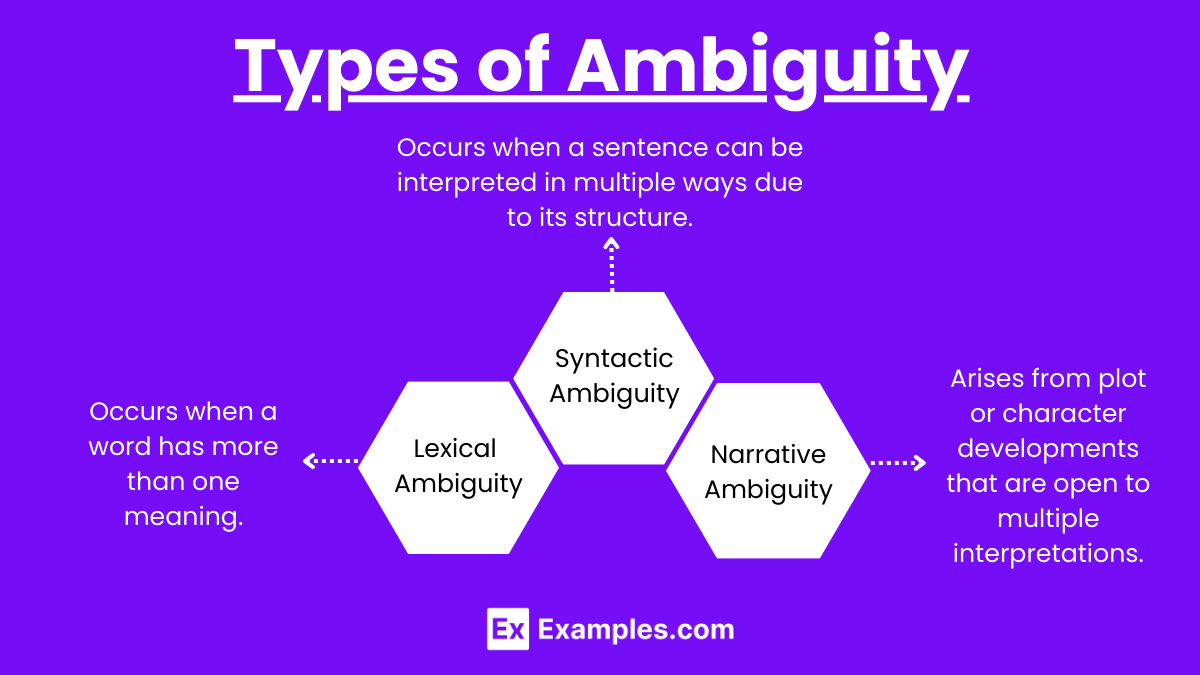In AP English Language and Composition, the study of ambiguity reveals how texts can support various interpretations, enriching both argumentative speech and argumentative writing. By incorporating rhetorical sentences and cumulative sentences that reflect multiple meanings, students can explore complex themes and perspectives, enhancing their analytical skills and depth of understanding. Mastering the art of interpreting ambiguity enables students to craft nuanced arguments and insightful essays, crucial for excelling in the AP exam.
Learning Objectives
The learning objectives for understanding how ambiguity allows for various interpretations in AP English Language and Composition include mastering the use of cumulative sentences to build detailed analyses, crafting clear explanatory essays and expository essays that explore multiple meanings, employing rhetorical sentences to enhance persuasive writing, developing a strong final thesis statement that acknowledges ambiguity, and applying critical thinking to interpret and evaluate different perspectives within texts.
Definition of Ambiguity
- Ambiguity: A situation in which a word, phrase, statement, or text has multiple meanings or interpretations. Ambiguity can be intentional or unintentional and is often used to add depth, complexity, and richness to a text.
Types of Ambiguity

- Lexical Ambiguity: Occurs when a word has more than one meaning.
- Example: The word “bank” can mean the side of a river or a financial institution.
- Syntactic Ambiguity: Occurs when a sentence can be interpreted in multiple ways due to its structure.
- Example: “The old men and women sat on the bench.” (Are both the men and women old, or just the men?)
- Narrative Ambiguity: Arises from plot or character developments that are open to multiple interpretations.
- Example: The ending of F. Scott Fitzgerald’s “The Great Gatsby” leaves questions about Gatsby’s true feelings and motivations.
Purpose and Effects of Ambiguity

- Depth and Complexity: Ambiguity adds layers of meaning to a text, encouraging readers to think more deeply and engage with the material on multiple levels.
- Engagement and Interest: Ambiguous elements can make a text more engaging by inviting readers to explore different interpretations and perspectives.
- Reflecting Real-Life Complexity: Ambiguity mirrors the complexity and uncertainty of real life, making characters and situations more realistic and relatable.
Examples of Ambiguity in Literature
- William Shakespeare’s “Hamlet”: The character of Hamlet is famously ambiguous, with scholars debating his true motivations, sanity, and the nature of his actions.
- Henry James’s “The Turn of the Screw”: The novella’s ambiguous nature leaves readers questioning whether the ghosts are real or figments of the governess’s imagination.
- Toni Morrison’s “Beloved”: The character of Beloved can be interpreted as a ghost, a symbol of the past, or a manifestation of trauma, adding depth to the novel’s themes.
Analyzing Ambiguity in Texts

- Identify Ambiguous Elements: Look for words, phrases, sentences, or narrative elements that can be interpreted in multiple ways.
- Consider Multiple Interpretations: Explore different possible meanings and how each interpretation affects the overall understanding of the text.
- Contextual Analysis: Use historical, cultural, and authorial context to inform your interpretations. Consider how ambiguity might reflect larger themes or issues.
- Textual Evidence: Support your interpretations with specific examples from the text, showing how ambiguity is created and its effects.
Using Ambiguity in Writing

- Cumulative Sentences: Use cumulative sentences to build complexity and introduce ambiguity by adding layers of detail and description.
- Example: “The painting, with its dark shadows and indistinct figures, seemed to whisper secrets of a forgotten past, leaving viewers in a state of reflective unease.”
- Rhetorical Sentences: Craft rhetorical sentences that pose questions or suggest multiple interpretations, encouraging readers to think deeply about the text.
- Example: “Can we ever truly understand the mind of another, or are we destined to see only shadows of their true selves?”
- Final Thesis Statement: Develop a final thesis statement that acknowledges the ambiguity in the text and presents a nuanced argument.
- Example: “While ‘Hamlet’ presents Hamlet’s actions as both rational and irrational, this ambiguity ultimately reflects the play’s exploration of human complexity and moral uncertainty.”
Ambiguity and Critical Thinking
- Encouraging Exploration: Ambiguity invites readers to explore multiple interpretations, enhancing critical thinking and analytical skills.
- Questioning Assumptions: By confronting ambiguous elements, readers learn to question their assumptions and consider alternative viewpoints.
- Deepening Analysis: Ambiguity requires readers to engage more deeply with the text, considering not just what is said, but how and why it is said.


